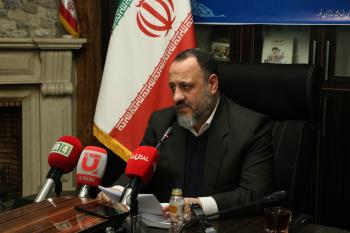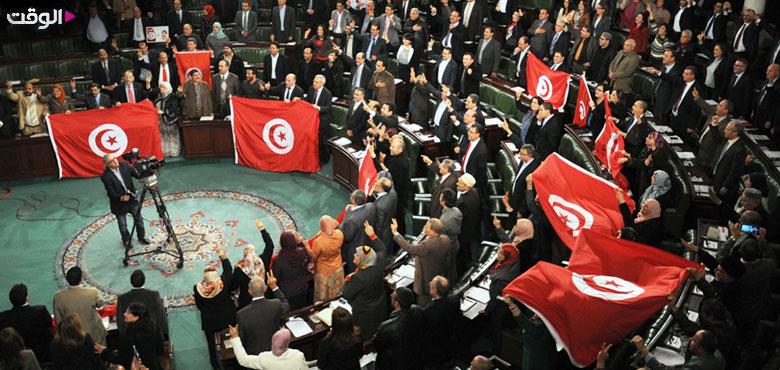Alwaght- Among Arab countries that were swept with the 2011 uprisings, Tunisia is well mentioned as a country that built a democratic political system out of the ashes of the revolution. Still, the country presently deals with three simultaneous crises.
First, the economy is in critical condition. Like the past 10 years, there is no light at the end of the tunnel as the country is witnessing tough economic days.
Second, the relations between the Islamic and secular parties are increasingly confrontational compared to the past.
Third, Ennahda Movement, the powerful Islamic party that played a crucial role in the transition period, is grappling with a leadership crisis. Rached Ghannouchi, the movement’s leader whose ideological flexibility and political pragmatism managed to distance the country in the transition from the post-revolution crises the other countries faced, is seeing the end of his second term and should step down according to the party rules. This has caused deep divisions in the movement.
The Tunisian economy has been in recession since the uprising that toppled the dictator Zine El Abidine Ben Ali. It has sustained damage due to fragile back-to-back governments. Roughly all of them have been unsuccessful in introducing essential reforms.
Since 2011, the country saw 11 governments coming and going, each with an average life of 10 months. This stripped the governments of chances to strengthen the power and follow a comprehensive program for real reforms. This instability is one of the downsides of Tunisian democracy.
An image of instability from Tunisia has been scaring away home and foreign investment and capital. The GDP per capita shrunk since 2010. Though in the next years it rallied, the African country lost its pace again as the coronavirus pandemic crisis struck. According to the World Bank data, the Tunisian economy in the second half of 2020 shrunk 21 percent, as tourism and exports respectively dropped 47 and 27 percent. The Unemployment rate is now 18 percent and the poverty is increasing, though extreme poverty, defined as making less than $1.90 a day, is below 1 percent in the country.
Even though some of the worrisome figures are from the COVID-19 outbreak, with respect to the recession the country lived over the past 10 years it is unlikely the economy will improve considerably in the near future. This challenge augments the public distrust in the existing political system’s power to address the daily problems the people are grappling with, and at the same time paves the way for the rise of populist actors in the nation’s political scene.
Against the backdrop of these gloomy economic conditions are escalating the political tensions, as the Annahda’s legitimacy is questioned by the secular parties.
Charges of corruption against the movement are increasing. This is while the corruption is in the depth of the ruling political elite and Annahda is very likely not worse than others. But the problem is that the political factions blame each other for the crisis and accuse of hindering the reforms when they face public unhappiness with political fighting and difficult economic conditions.
Meanwhile, the internal Annahda crisis deteriorates the already unstable political situation in the country. Despite differences between the Ghannouchi-led pragmatic faction and the more radical factions, the movement has so far been successful in showing a picture of unity from itself. But this picture is collapsing as gaps widen between the veteran politician and former political prisoner Ghannouchi and younger politicians who emerged after the 2011 revolution. Now many believe that a deepening chasem exists inside the body of Annahda. Drifting closer to the 11th Annahda convention has sped up the crisis inside the movement. This assembly will set the political landscape for the future and most importantly for the new chief. According to the party’s statute, Ghannouchi cannot get the post for a third term.
In September, a 100-member party group sent him a letter urging him to announce he will not run for the post anymore and to arrange the party convention before year’s end. The request was not addressed and a month later the group wrote a second letter to him, which led to the boycott of the meeting of the central council of the movement by one-third of the members on November 10.
Ghannouchi supporters argue that in the difficult current conditions, Annahda needs a charismatic leader and therefore he should take the post for the third term, though against the statute lines. On the opposite side, some warn that flouting the party rules not only compromises democracy inside the party but also the whole governance. Some back a middle path, however. They say that while a new leader is chosen, a new post should be created for Ghannouchi for higher levels of decision making. But none are yet addressed.
The way of settling the internal crisis affects the other problems of the country. If Ghannouchi is elected for the second time, the ground will be paved for parties that claim Annahda take moves against the democratic principles. This means an intensification of political rivalry which in turn would yield political instability and divert the parliament from reforms and finding remedies to serious economic woes. 10 years after the revolution, the Tunisian democracy is crisis-hit.



























